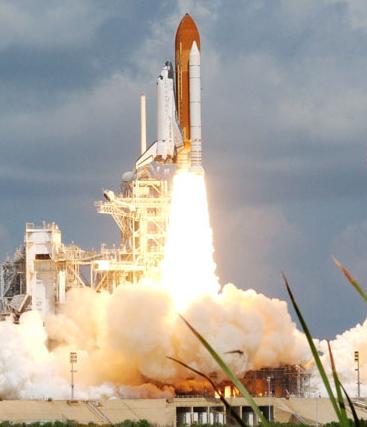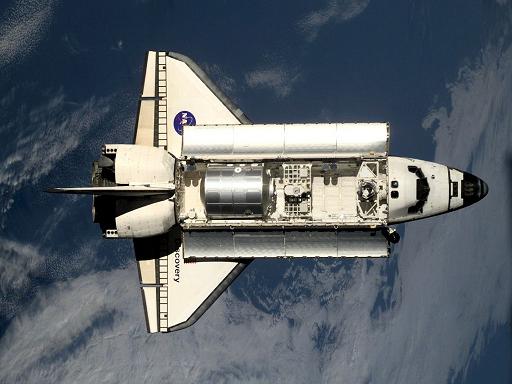
Home
Rocketry
History
Rocket Equation
Propulsion
Build Your Own
Orbits
Technology
The Space Shuttle

The shuttle is the most recognized icon of space flight. It has completed 114 flights since 1981, with only 2 ending in tragedy. The main purpose of the shuttle was to be a cost-efficient reusable space flight vehicle with large payload capacity. The shuttle was first thought up in the 1960's and was completed in the prototype phase in the 1970's. Challenger was the first shuttle to fly, in 1981. There were 5 operational shuttles, now there are three. Challenger and Columbia were both lost, along with their entire crew. Endeavor, Atlantis and Discovery are still in service. The shuttle is composed of the Orbiter, which is what most people think of as the shuttle, the SRB's (Solid Rocket Boosters) and the External Fuel tank. The orbiter and the SRBs are reusable, while the external fuel tank burns up in the atmosphere after being jettisoned. The shuttle has three main engines which are fed a mixture of liquid oxygen and hydrogen from the external fuel tank, to achieve orbit it must also utilize the SRBs which provide 71% of the thrust at liftoff, but are jettisoned only a few minutes into launch. The SRBs deploy a parachute and splash down in the Atlantic, where they are recovered. The external tank is jettisoned after it has been empty and once the orbiter has reached the desired orbit. The shuttle is used for a number of reasons; lately it has been restricted to hauling parts of the International Space Station (ISS) into orbit, and to bringing large satellites, like Hubble, into orbit. It has the capability to perform servicing missions on satellites that are already in orbit; it can also re-capture satellites and return them to earth. One feature that makes the shuttle so versatile is the cargo bay, it takes up most of the room on the space station and is the reason why such large payloads can be ferried to and from earth. When the shuttle de-orbits it is basically an over sized glider. It has no propulsion, and performs maneuvers to slow itself down, if a shuttle over or under shoots its landing strip there is nothing it can do because it has no way to change its course other than its control surfaces. This is why the shuttle reentry is completely computer controlled.
Back to History